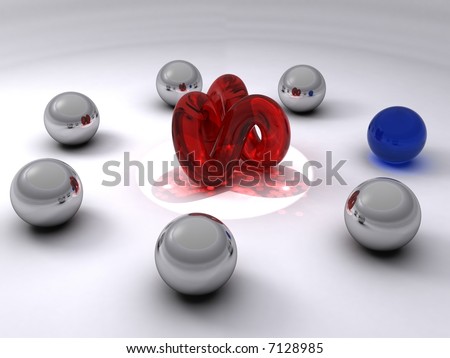The most familiar type of glass, used for centuries in windows and drinking vessels, is soda-lime glass, composed of about 75% silica (SiO2) plus Na2O, CaO, and several minor additives. Often, the term glass is used in a restricted sense to refer to this specific use.

arrangement in a glass
In science, however, the term glass is usually defined in a much wider sense, including every solid that possesses a non-crystalline (i.e., amorphous) structure and that exhibits a glass transition when heated towards the liquid state. In this wider sense, glasses can be made of quite different classes of materials: metallic alloys, ionic melts, aqueous solutions, molecular liquids, and polymers. For many applications (bottles, eyewear) polymer glasses (acrylic glass, polycarbonate, polyethylene terephthalate) are a lighter alternative to traditional silica glasses.

Types of Amorphous Glass
Glass, as a substance, plays an essential role in science and industry. Its chemical, physical, and in particular optical properties make it suitable for applications such as flat glass, container glass, optics and optoelectronics material, laboratory equipment, thermal insulator (glass wool), reinforcement materials (glass-reinforced plastic, glass fiber reinforced concrete), and glass art (art glass, studio glass).

amorphous structure, glass

Amorphous structure of a

a natural amorphous glass

Amorphous Silicon Sealed

Ceramics 5a

so they are said to have

amorphous solid?), glass

Six chrome balls and one glass ball are placed around an amorphous glass

arrangement in a glass
In science, however, the term glass is usually defined in a much wider sense, including every solid that possesses a non-crystalline (i.e., amorphous) structure and that exhibits a glass transition when heated towards the liquid state. In this wider sense, glasses can be made of quite different classes of materials: metallic alloys, ionic melts, aqueous solutions, molecular liquids, and polymers. For many applications (bottles, eyewear) polymer glasses (acrylic glass, polycarbonate, polyethylene terephthalate) are a lighter alternative to traditional silica glasses.

Types of Amorphous Glass
Glass, as a substance, plays an essential role in science and industry. Its chemical, physical, and in particular optical properties make it suitable for applications such as flat glass, container glass, optics and optoelectronics material, laboratory equipment, thermal insulator (glass wool), reinforcement materials (glass-reinforced plastic, glass fiber reinforced concrete), and glass art (art glass, studio glass).

amorphous structure, glass

Amorphous structure of a
a natural amorphous glass

Amorphous Silicon Sealed

Ceramics 5a

so they are said to have

amorphous solid?), glass

Six chrome balls and one glass ball are placed around an amorphous glass
Sem comentários:
Enviar um comentário